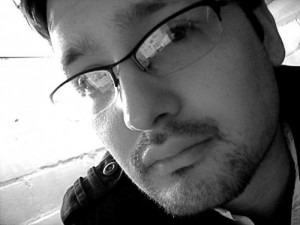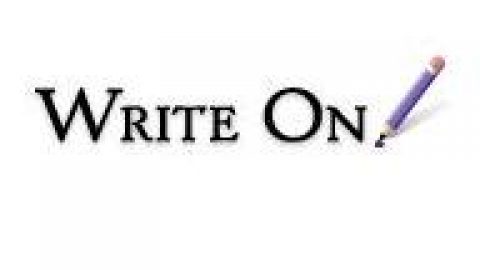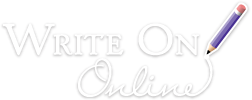Write On! From Cork Board to Brain and Vice Versa
by filmmaker/writer Tyler Weaver
When I started making films and accepted that screenwriting was the essential element of the whole sordid affair, I, like most of you, read books, scripts, and watched (too many) films—which left very little time for the actual act of writing.
Eighty percent of those books sang the praises of “The Board,” that mythical cork-creature which, when filled with neatly ordered index cards containing directions of arc and story, would enable you to craft a workable first draft of a screenplay, book, comic, or some combination thereof.
After numerous attempts with the highly organized index card/outline system, I found myself with a sore neck, pin-pricked fingers, no script, and mounting frustration. The board was relegated to a far-flung corner of the house, along with a case of cymbals and other remnants of a life past.
Loudly—to myself—I proclaimed, “Screw the Board.”
I then embraced the writing habits of my former storytelling life, that of a music composer: sitting down, humming, playing on a piano, and writing whatever came, hoping something would show up. Unfortunately, with the reach backwards to a former style came the ruinous trappings of said former style—namely the music composer version of “Catholic Guilt,” or, more commonly, “Perfectionism.” I revised while writing, and stopped before I even started; this degraded into, “I can’t do this.”
“The Board” mocked me from its corner.
As I attempted to wrap my head around narrative storytelling, I was doing storytelling of a different sort: documentary. Making a documentary was—to me at least—the reverse of making a narrative film. Instead of pounding my head (or bouncing a ball) against a wall during the development phase, I pounded my head (or ball) against a wall during post-production. Hours upon hours of footage needed to be molded into a coherent and meaningful story … and staring endlessly at a 20” iMac with multiple Final Cut windows open was not the way to do that.
Blowing away a healthy coating of dust and ignoring the clang of cymbals, I reached for “The Board.” We stared at each other for awhile, much like Charles Bronson and Henry Fonda in Once Upon A Time In The West. Slowly but surely, I pieced together the film (Gather ‘Round the Mic) with index cards and the board. Not with any sort of thought in regards to arc, or meaning, or anything. I put random notes on the cards. Sequences. Cuts. Thoughts. Questions to myself. Within a month, I pulled myself out of a blockage—I had taken the information from my head and put it in front of me in an order I could understand.
“The Board” was given a new purpose in my creative life—that of my cork-brain.
It was only through the synthesis of two seemingly disparate stages of filmmaking—development & post-production—and of two completely different filmmaking methods—narrative and documentary—that my method of creating was formed. My cork-brain is currently filled to the brim with index cards, napkins, and bits of paper (in something resembling an order) for my next project: WHIZ!BAM!POW! It is much more pleasant than having unending thoughts swirling around in my head, and infinitely closer to actual writing than a defined shape right out of the gate.
You need to get the marble before you can make the sculpture–be it a film, a book, a basket, or a piece of music–and the gray matter in your head isn’t marble. It’s your chisel. “The Board,” and all of those chicken scratched cards and bits and pieces constitutes your marble. Chip away what doesn’t work, define what needs definition, and your sculpture will come to life.
 Tyler Weaver is a filmmaker, writer, critic, and the founder and EIC of Multi-Hyphenate. He’s currently making new things and yaks about that and more on Twitter under the creative guise of @tylerweaver.
Tyler Weaver is a filmmaker, writer, critic, and the founder and EIC of Multi-Hyphenate. He’s currently making new things and yaks about that and more on Twitter under the creative guise of @tylerweaver.







Comments are closed.
[…] WriteOn! Online to read the complete article! […]
Fantastic! I am one of those classic outliners. I have heard the same rumors that boards or index carding were the ANSWER to all structure problems, but I’ve resisted. Maybe I need to broaden my horizons. I’m about to outline a new script. Perhaps I should put a cork in the outline 😉 Thanks, Tyler!
Well, now I know why I’ve kept that old cork bulletin board kicking around all these years, I think I even know where I have a jar full of push-pins! I like the line and concept “You need to get the marble before you can make the sculpture”. I think I might need to sharpen my chisel a little, though! 🙂
The board is very visual, which is great since I’m a very visual person (explains a lot). I can move scenes (thoughts, sequences, etc – I never stick to the “scene per card” thing. Too limiting. As I progress through drafts, then sure, I’ll go for it, and the board will get more orderly, but never when I’m planning a script.
Thanks for reading!
T
[…] the Healthy Writer: The Key to Falling Asleep Faster by movement and fitness coach Jennifer Waak Write On! From Cork Board to Brain and Vice Versa by filmmaker/writer Tyler Weaver From Writer to Tweeter by Jeanne Veillette […]
[…] For more from Tyler Weaver, read Write On! From Cork Board to Brain and Vice Versa. […]
[…] he has contributed articles to the websites of Jon Reiss, Sheri Candler, the Spectator Arts blog, Write On! Online, the Indie Film Hub, Freethinking Out Loud, and Focal Press’ Mastering Film website. In […]